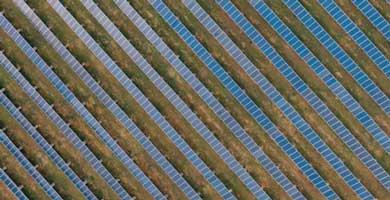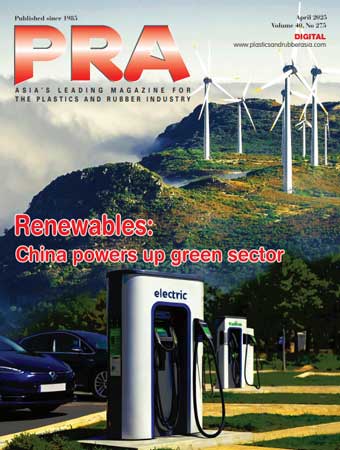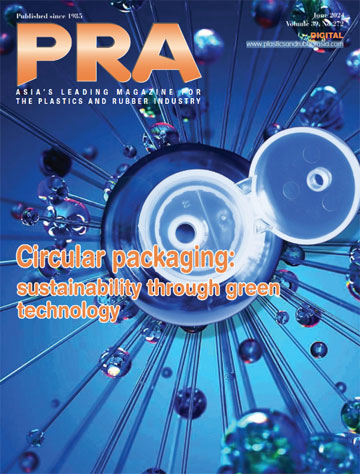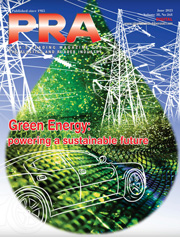Country Focus: Clean energy and EVs boosting China’s economy
China is leveraging the country’s positive economic growth outlook through investments and conducive policies in clean energy and electric vehicles (EVs), says Angelica Buan in this report.
Accelerated growth from “Made in China” initiative
China's economy continues to evolve in 2025, balancing steady expansion with emerging challenges. Industrial output reached US$5 trillion in 2024, according to the Ministry of Industry and Information Technology. The government’s 5% GDP growth target in 2025, will see a gradual slowdown due to US tariff hikes, with growth expected to reach 4.5%.
Meanwhile, a landmark policy is fuelling China’s growth. Made in China 2025 (MIC2025), is a state-led initiative designed to localise high-tech industries and establish the country as a global manufacturing powerhouse by 2049. It aims to reduce reliance on foreign technology, boost domestic innovation, and transition from a low-cost manufacturer to a direct value-added player in global hightech industries.
The plan focuses on increasing the local content of core components and materials, aiming for 40% by 2020 and 70% by 2025. State-sponsored investments and funding have been channeled into key sectors, including electric vehicles (EVs), next-generation IT, telecommunications, robotics, and artificial intelligence (AI).

By transforming its manufacturing base, China intends to compete directly with advanced economies such as South Korea, Japan, and Germany.
While the policy has accelerated China's technological growth, it has also faced reproach. Leading economies, including the US, Germany, and the European Union, have expressed concerns over intellectual property issues and alleged discriminatory practices against foreign companies.
Scaling renewable energy towards peak carbon emissions
China remains the world’s largest producer and consumer of energy, and its policies heavily influence global markets and emissions trends. With nearly 90% of its greenhouse gas emissions coming from the energy sector, the country has set bold targets to move away from fossil fuels.
In 2020, President Xi Jinping announced a plan to peak carbon emissions before 2030 and achieve carbon neutrality by 2060. Achieving the 2030 emissions peak will depend on improved energy efficiency, an expansion of renewables, and a gradual reduction in coal use.
According to a study by Carbon Brief, China has made significant investments in clean energy, including solar, batteries and EVs, which have grown three times faster than the overall economy. New energy vehicle production has surged by 47%, while lithium-ion battery output increased by 37% year-on-year.
Renewable electricity consumption is set to rise to 33%, with half of new energy demand met by renewables. If achieved, the plan could cut up to 2.6 gigatonnes/year of carbon emissions.
In line with this strategy, China is expanding its renewable energy infrastructure with major projects, such as the construction of new energy bases in the Gobi desert. There are also plans to develop offshore wind farms, integrate renewable energy into local grids, and build transmission routes. Additionally, low-carbon upgrade trials would be launched for coal-fired power plants.
Some developments in the area of renewables that have come to fruition include China connecting one of its largest photovoltaic (PV) projects in Ruoqiang, in the Xinjiang Uygur region. The four-gigawatt facility is the country’s largest solar project in the desert.
Another massive project, the Motuo hydropower facility. project, is expected to generate three times the energy of the Three Gorges Dam, the world’s largest hydroelectric project, powering 70 to 80 million Chinese homes annually.
Fresh investments for clean energy/petchem projects

Elsewhere, Harbin Electric Corporation, one of the country’s three largest manufacturers of power plant equipment, has rolled out the first domestically developed 16-megawatt (MW) gas turbine, the HGT16.
Gas turbines are essential for energy, aerospace, industrial production, and offshore operations due to their high-power density, efficiency, and low emissions. This development strengthens China’s renewable power infrastructure. The HGT16 delivers at least 16 MW of power with thermal efficiency exceeding 36%
As China continues expanding its clean energy initiatives, Jinneng Holding Group, a state-owned energy company, has also begun construction on a large-scale renewable energy project in Shanxi Province, northern China. The US$7 billion project will feature 6 GW of wind and solar capacity, along with 3.4 GWh of energy storage. It is scheduled to be connected to the Chinese grid by the end of 2025 and will supply power to the municipalities of Beijing and Tianjin, as well as Hebei Province.
Similarly, the petrochemical sector is advancing alongside these clean energy projects. Saudi Arabian Oil Company (Aramco), China Petroleum and Chemical Corp (Sinopec), and Fujian Petrochemical Company Limited have cooperated on an integrated refining and petrochemical complex in Fujian Province.

The facility will include a 16-million-tonne/year oil refining unit, a 1.5-million-tonne/year ethylene unit, a 2 million-tonne/year paraxylene capacity, and a 300,000- tonne crude oil terminal. It is expected to be fully operational by 2030.
In a related development, US firm Apple Inc has announced a new investment in its China Clean Energy Fund to accelerate clean energy production in China. Launched in 2018, the second phase commits US$99 million to expanding renewable energy. The new fund aims to add 550,000 MWh of wind and solar capacity annually to China’s grid. With two-thirds of its China manufacturing already powered by renewables, Apple claims that this initiative helps its suppliers switch to cleaner energy.
(PRA)SUBSCRIBE to Get the Latest Updates from PRA Click Here»









